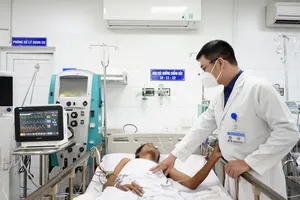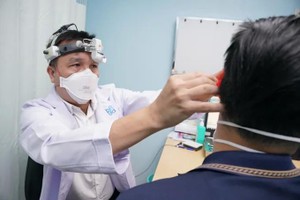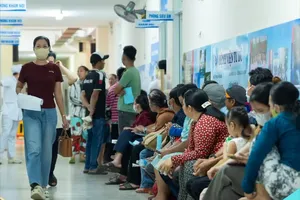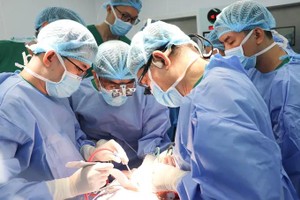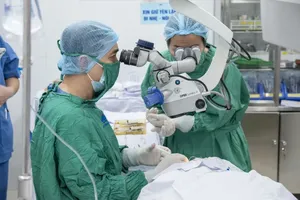
A hospital-acquired infection (HAI), also known as a nosocomial infection, is an infection that acquired in a hospital or other health care facility.
The most popular is urinary tract infection and hematological infection and Postoperative nosocomial infections resulting in extended length of stay, substantial morbidity and mortality, high excess of cost, and worse the occurrence of drug-resistant viruses.
Fatigue of the puffy incision in legs, patient Le Huy Hung from the northern province of Thanh Hoa said that he underwent a surgery to realign and fix the broken bones; however, five days after the operation, he had high fever because the incision was swollen and festering. After examining, doctors concluded he had an abscess; therefore, he had to stay in the hospital longer for further treatment, he said .
Meantime Thanh Nhan Hospital was overcrowded with patients while it was nearly noon; most of cases are dengue people. Due to patient overload, medical workers had been run off their feet when the number of patients rose drastically. Some of them even forgot to wear gloves and masks when examining patients.
Many patients caught additional disease when they come to infirmaries for examination. Deputy Head of Bach Mai Hospital’s Infection ward Dr. Truong Anh Thu said that HAI is a challenging problem for treatment quality.
One of the reasons is that medical workers are neglected the matter while hospital managers don’t really take heed to cross-infection for patients and medical workers.
The Ministry of Health admitted HAI is a challenge for not only Vietnam’s hospitals but also in the world. Worse, HAI is a burden for patients and infirmaries especially in poor nations and developing countries because it results in extended length of stay, substantial morbidity and mortality, high excess of cost and increase in using of antibiotics.
According to the World Health Organization, the rate of inpatients with HAI in developed nations is 5-10 percent while it doubles in developing countries.
In conclusion, medical workers should strictly observe hygiene regulations and follow standard precautions. Early detection and isolation patients with nosocomial infection should be done to prevent cross infection between patients and patients. Moreover, hospitals should build new facilities.


